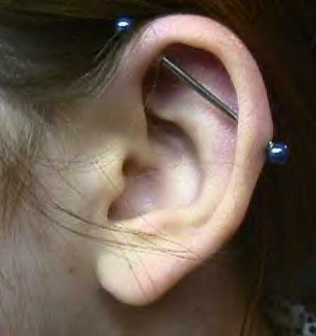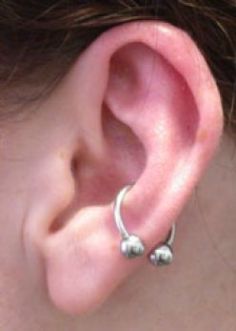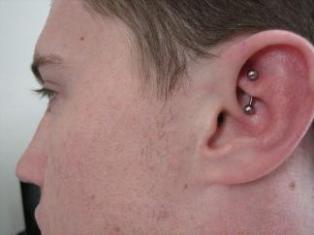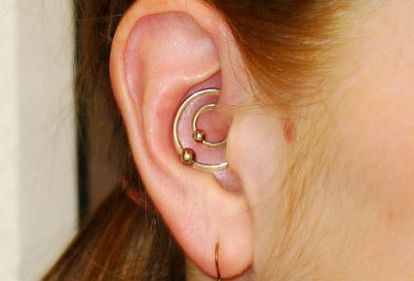Unique Styles of Ear Piercing
Ear piercing is the most common and the most ancient form of piercing and body modification. We have already discussed the most widely practised forms of ear piercings in an earlier post. We now come to the lesser seen types of ear piercing, which are now slowly gaining popularity because of their unique and offbeat look.
Industrial

An industrial, or scaffold, piercing is made up of two holes that are connected by a single piece of jewellery (usually a long barbell). An industrial piercing is commonly seen pierced through the cartilage on the upper ear, one hole close to the head and the other further down on the outer rim. The standard industrial is actually two helix piercings, but industrials can be a wide range of connected piercings. Two or more industrials on one ear are sometimes referred to as an ear cage. Healing time takes anywhere from 3 months to 1 year.
Conch

The conch is the large expanse of cartilage located in the middle of the ear. A conch piercing is located in the big area of cartilage just above the earlobes and the anti-tragus on the inner ear. It can be either an inner or outer conch piercing, with the inner conch piercing located in the centre ear cartilage, adjacent to the ear canal and the outer conch piercing is located in the outer ear cartilage, in the flat part of the top, outer ear. Conch piercings can be done in a range of gauges and most people wear either a barbell or a labret stud in their conch. A ring or a barbell too can be worn on this type of piercing. However when selecting a ring make sure it is large enough to encircle the outer ear. Healing time is usually around 8-16 weeks.
Rook

A rook is the thick fold of cartilage located on the anti-helix (upper inside of the ear) just above the tragus. How easy a rook piercing is going to be can depend on the anatomy of your ear. Some people have a very pronounced rook, which is easier to pierce but requires slicing through a larger amount of flesh. Smaller rooks don’t have as much cartilage to pierce through, but can be more difficult for the piercer to get at. Because the piece of cartilage through which the rook piercing is placed is so thick, piercing this spot can be quite painful. Healing time can be anywhere from two months to 1 year.
Daith

The daith (usually pronounced day-th, but properly pronounced doth, rhyming with moth) is located between the rook and the ear canal and is closes to the head. The word daith is a variation of the hebrew word, daath, which translates to ‘knowledge’. It is similar to the rook in terms of depth and healing time, which is also 8-16 weeks initially and up to one year to be healed completely.




